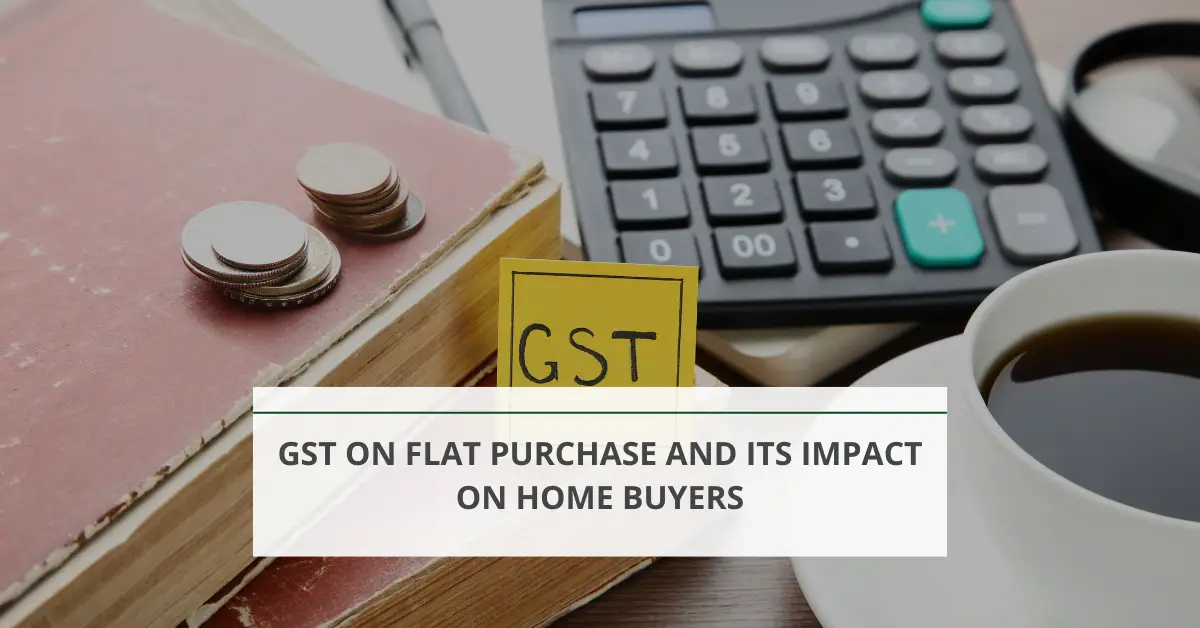

While purchasing a flat in India, buyers must be aware of the taxes and charges to be paid, one of which is Goods and Services Tax (GST). GST was introduced with an objective of streamlining the tax structure and making it more transparent for all. However, it has had a major impact on the cost of flat for homebuyers. So let us explore what the impact entails and how much GST is usually required to be paid while buying a flat in India.
What is GST?
The Goods and Services Tax is a unified indirect tax that was introduced in India on Jul 7, 2017. It replaces a host of taxes such as excise duty, VAT and service tax. GST is levied on goods and services at every step of the supply chain. However, when it comes to real estate, GST is applicable to be paid only on under construction flats and not on ready possession units.
GST Rates on Flats in India
GST directly impacts the final cost of a home, so understanding the applicable GST rates on flats is crucial for homebuyers. Let’s see the break down:
- On Affordable Housing – Affordable housing are homes of carpet area upto 60 sq.m in metropolitan cities and up to 90 sq.m in all other cities, priced below ₹45L. The GST on affordable housing is 1% without any Input Tax Credit (ITC).
- On Non Affordable Housing – For all flats that do not fall in the affordable housing bracket, GST is levied at a rate of 5% without any ITC.
- On Commercial Properties – On commercial properties such as shops and offices, GST is charged at a rate of 12% with an ITC available.
Note: Before the 2019 revision of GST rates, homebuyers were allowed ITC or Input Tax Credit. ITC allowed developers to claim tax credits on GST paid for the goods and services used during construction of the flat. This reduced the overall cost of the flat. Post 2019, ITC is not available and GST rates have been revised.
Impact of GST on Flat Prices
The impact of GST on the overall cost and sentiment of purchasing a flat has been quite mixed.
Cost of under construction properties
GST is applicable on under construction properties leading to homebuyers preferring ready to move in properties. However, developers are offering under construction properties at a lower price than ready to move in flats, along with pre-launch/launch offers and festive discounts.
Impact on Affordable Housing
The reduced GST rate of only 1% on affordable housing has made it extremely attractive and budget friendly for homebuyers, especially those buying for the first time. The low tax rate is a relief in a rising real estate market.
Increased Transparency
Before GST was introduced, home buyers had to pay multiple types of taxes while buying a flat, such as service tax, VAT and other state level taxes making the process quite complex and often opaque. GST has increased transparency and simplicity in the system making the charges clear for home buyers from the get go.
Impact on Construction Costs
Removal of the Input Tax Credit means builders cannot claim a refund of GST paid on goods and services used in the construction process such as raw materials and labour. Therefore the overall cost of construction and hence the prices of flats have gone up.
Preference for Ready to Move in Flats
As GST is only charged on under construction flats, the home buyers who want to avoid paying the hefty tax amount and want to move immediately, prefer buying ready to move in flats. This has initiated a shift in the trend where developers are encouraged to focus on completing existing projects rather than launching new ones.
Impact on Premium Properties
Those interested in luxury or premium flats find the difference in price quite noticeable after adding GST to it. Even a 5% tax amount can make a big difference if the property is priced in crores in the premium segment, especially without the option of ITC.
Thus the introduction of GST has definitely streamlined the tax structure and increased transparency compared to the pre-GST regime. However, it has had a major impact on preference and affordability of homebuyers.


